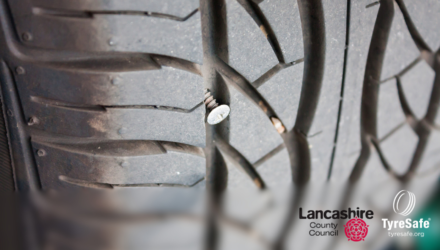
According to Volkswagen, unscheduled downtime can cost fleet operators more than a staggering £600 a day. It’s for this reason that commercial vehicles are increasingly being serviced or repaired away from a normal workshop environment, to the benefit of fleet operators.
After all, taking the service to wherever vehicles are located reduces downtime for the customer and gets drivers back on the road as quickly as possible.
To deliver a quality service, a mobile service technician will need a fully functional van, containing the tools and equipment they need for service and repair work. But the other essential requirement is access to compressed air.
The technician can carry a separate compressor in the back of their van – but this takes up valuable space, and can be hazardous if it’s not properly secured. They will also need to ensure a fuel or power source is available wherever the customer’s vehicle is located, which can be difficult if it’s on the side of a road.
On-vehicle power offers a better alternative. This involves a vehicle being professionally converted so that the power of the engine is used to drive auxiliary equipment. These systems can provide compressed air, electric, hydraulic or high-pressure water jetting for commercial vehicles used by utility companies, emergency services and mobile tyre fitting operators.
Although small traditional compressed air solutions such as those based on petrol-driven piston technology can remove the need for towing, equipment still needs to be carried in the load space of a vehicle and they can be noisy. Considering that employees operating from mobile workshops spend most of their workday in and around their vehicles, quieter systems can provide safer and more comfortable working conditions.
Winton’s on-vehicle power systems operate at only 72dB(A), which is well below the level at which employers must provide hearing protection and hearing protection zones. Lighter systems, such as Winton’s, also lower exhaust emissions to benefit both employees and the environment.
Another benefit to certain on-vehicle power systems, is there is less cost involved.
The Pressure Systems Safety Regulations 2000 stipulates that ‘users and owners of pressure systems are required to demonstrate that they know the safe operating limits (principally pressure and temperature) of their systems, and that they are safe under those conditions.’ To demonstrate this, a pressure system which could cause injury due to accidental release of stored energy and pressure, should be checked in accordance with a written scheme of examination if it equals or exceeds 250 bar litres. This document also needs to be put in place before the system is operated.
This needs to be done for most traditional on-vehicle power, as the ‘bar litres’ of their compressor systems (the maximum pressure in bar multiplied by the internal capacity in litres of the air receiver) tend to be equal to or exceed 250 bar litres.
However, Winton’s systems have been designed to operate below this threshold, thereby removing this extra cost of needing a written scheme of examination (WSE), leaving vehicle owners to concentrate on running their business and serving customers. It should however be noted that even where a WSE is not required, the operator still needs to ensure the system is correctly maintained.
Modern on-vehicle power systems can improve operational efficiency, the working environment for employees, as well as reduce emissions. They offer a multitude of capabilities, for instance, Winton’s on-vehicle power systems can include a compressor, generator, inverter and/or hydraulic power, alongside a range of ancillary equipment, including racking and workbenches, external light bars and work lights. They can also be fitted to a wide range of commercial vehicles, from light commercial vehicles to 26 tonne lorries. So, for businesses who are still operating in a traditional way and want to take their fleet of service vehicles to the next level, on-vehicle power is the perfect choice.
Read Paul Smith’s bio here.

















